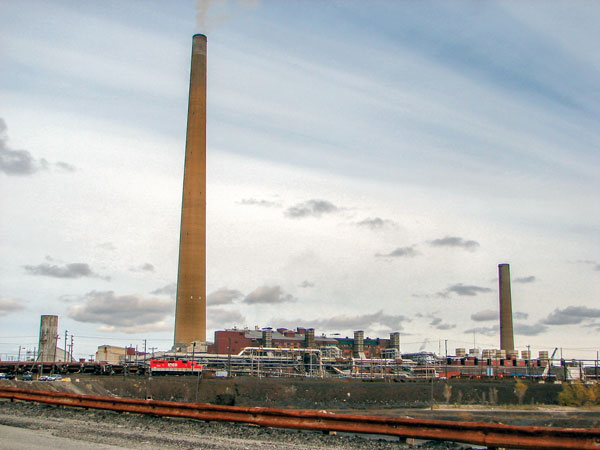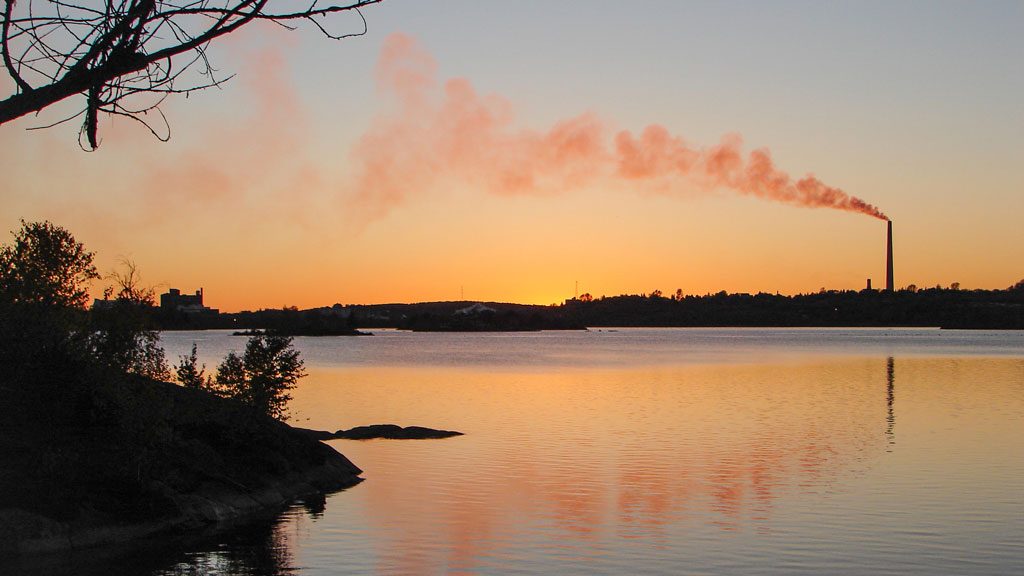The iconic Sudbury superstack is coming down but first Vale Canada has to figure out who will do it and how it will be done.
However, it will go with a whimper and not a big bang with engineers ruling out an explosive driven implosion because of environmental concerns and the stack’s proximity to existing buildings and the community itself.
While there are many local residents who feel sad about the looming demise of a landmark which is as recognizable as the Big Nickle. Underlying it all is a good news story, Vale’s $1 billion investment in its Clean AER Project to cut sulphur dioxide emissions to 20 kilotonnes per year, well below the provincial regulatory limit of 66 kilotonnes per year.
That’s a far cry from the tonnes spewed out when the 1,250 foot superstack was built in 1972. It is also an indication of how clean technology has improved since original owner Inco dispersed sulphur dioxide and nitrogen dioxide emissions from its Copper Cliff smelter over a wide area.
Vale has been mulling the future of the superstack since about 2013 and in 2015 announced it was looking at what the future might hold. The verdict is in and it is curtains for the Superstack but it’s not going to happen overnight, says Tom Zanetti Manager, Operational Readiness, Clean AER Project at Vale.
He’s projecting the actual demolition to start in April 2020 when the carbon steel liner at the bottom and the stainless steel counterpart at the top are sliced into sections and lowered down. Flue dust and other residue from the sides and the breach area at the bottom will also be recovered and any recyclable materials diverted for reuse.
It is stainless steel at the top because the flue temperatures tend to be lower and because it’s in contact with rain and snow which would otherwise lead to corrosions, he says.
“We are just in the process of having an engineering firm write the scope of work,” he says. “We did go out and get companies to come in and give us an idea of what could be done and how, though.”
Budget for the demolition won’t be clear until those RFPs come back with pricing and other components for the job are calculated such as whether the metal will be salvageable or whether the concrete parts will end up in the tailing area of used for aggregate.
There’s even been some discussion about collecting chunks, attaching a plaque of authenticity and offering them as souvenirs much like the Berlin Wall.
In the meantime, the superstack is getting ready for semi-retirement mode while two 450 foot stacks are completed and brought on line. It remains on standby as an emergency vent should there be a problem in the smelting furnace where it needs to be shut down quickly and gases vented.
“We also need to keep it warm because otherwise there will be corrosion as water forms and the metal will decay which will make extraction more problematic,” he says. There are two 40 million BTU natural gas heaters in the flue which are sensor controlled to activate and keep temperatures above the dew point.
Obviously, keeping the superstack warm is a substantial cost, as is the required annual maintenance.
The first phase between now and April 2020 will be to get the new stacks operational and prepare the superstack.
The second phase is to clear out the vents leading into the superstack and remove any equipment such as the burners and start the metal extraction which is expected to take up to 18 months. The third phase, taking down the stack, will begin after that, though no date has been set.
“The superstack is three feet thick at the bottom and tapers towards the top,” says Zanetti, a life-long local resident who remembers it being built. “So they’re going to probably castellate from the top down with jackhammers and then knock them through.”
Once they get to the mid-point where the walls get thicker, culminating in the three-foot thick base, they will likely use a diamond wire cutter to saw through sections, he says.
Crews will have to build a suspended workstation and rig some kind of crane system to lower the panels. As they work on the concrete, it will be intensive with full hazmat suits and respirators because of flue dust accumulations with residues of arsenic and other toxins inside the stack.

Sudbury superstack facts and figures
—Construction of the superstack began in 1970 at a cost of $25 million and entered into full operation in 1972. The superstack was built to disperse sulphur gases and other byproducts of the smelting process away from the City of Sudbury.
—The superstack is 1,250 feet (381 metres) high, the tallest chimney in the western hemisphere and the second largest in the world. It is also the second tallest freestanding structure of any type in Canada, behind the CN Tower.
—The superstack is 35 metres wide at the bottom with one-metre-thick walls. At the top it is 16 metres wide with 25-cm thick walls. It has 937 tonnes of reinforcing steel buried in its concrete shell and a stainless steel liner that weighs 17,585 tonnes.
—Following completion of the stack’s concrete shell, a top-to-bottom vertical steel ladder was installed inside with rest platforms for maintenance.
—There is a steel flue system to carry gases from Vale’s Copper Cliff Smelter to the superstack. This system currently carries gases travelling at a top speed of more than 85 kilometres per hour and at a maximum temperature of 390 C.
—Construction of the superstack was followed by environmental reclamation projects across the City of Greater Sudbury including the liming and seeding of more than 3,200 hectares as well as the planting of approximately 300,000 trees annually.
— All facts and figures courtesy of Vale



Recent Comments